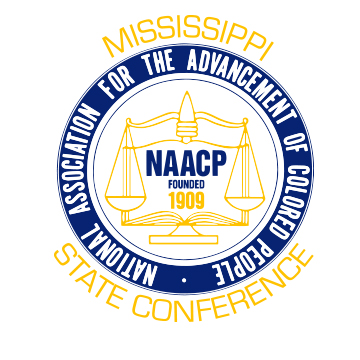30 Years After MOVE: Law Enforcement Didn’t Learn Anything From One of America’s Worst Cases of Police Brutality
2015/05/13 – The events of May 13, 1985, are a case study in the failures of police, prosecutors and judges—failures that we continue to see today.
On May 13, 1985, police in Philadelphia—Pennsylvania’s largest city—dropped a powerful bomb containing military C4 explosives on a house occupied by six children and seven adults.
That aerial assault 30 years ago is one of the worst incidents of police brutality in modern America.
The bomb, dropped from a state police helicopter, sparked a fire.
Philadelphia’s then-Police Commissioner Gregore Sambor, along with then-Fire Commissioner William Richmond, barred firefighters from battling that blaze, pursuing a bizarre strategy to use the fire as a tactical weapon to drive the occupants from their barricaded house. Police had sought to arrest four adults inside the building on seven charges ranging from disorderly conduct to possession of explosives.
That decision to “let the fire burn” allowed the blaze to roar into a firestorm.
The inferno incinerated 11 inside the bombed building, including five children ages 7 to 13. That inferno also destroyed 60 other homes in the West Philadelphia neighborhood, leaving 250 people homeless. All of those killed in that inferno ignited by police were black, as were those left homeless by the inferno’s destruction.
Today many Philadelphia residents, particularly those under 30 years old, are unaware of that history-staining 1985 police attack on members of MOVE, an anti-establishment group founded in 1972. Authorities deemed MOVE a radical organization. The 11 people incinerated were MOVE members, including the organization’s founder, John Africa.
An Overlooked Atrocity
Incredibly, an aerial bombing of an American city by police rarely makes the lists of worst police-abuse incidents, despite its gruesome death toll and extensive destruction.
Many “worst lists” include the 1991 shooting of Amadou Diallo, who died during a 41-bullet fusillade from New York City police officers. Yet during the assault on May 13 that began at 5:50 a.m., Philadelphia police fired thousands of bullets into the MOVE house using a range of firearms, including machine guns. The confrontation went on until police dropped the bomb at 5:27 p.m.
The infamous 1985 bombing is far from an isolated incident in a dim past. The failure to hold Philadelphia authorities accountable for that deadly, destructive episode contributed to the impunity that drives the persistence of police brutality—brutality that has triggered massive protests across America since last year, after prosecutors in St. Louis and New York City manipulated grand juries away from indictments against the police officers responsible for the deaths of Michael Brown and Eric Garner.
In America, prosecutors control the grand jury process without input from judges and other lawyers. Legal experts repeatedly criticize the failure of local prosecutors to charge police even when evidence documents indictable offenses. A 1991 article in the American Bar Association Journalcriticized the “unwritten code” that prosecutors will not bring charges against police.
After that fatal 1985 raid, Philadelphia prosecutors manipulated a grand jury away from indictments against police. Prosecutors even refused to file perjury charges against police officers caught lying to the grand jury. Not a single Philadelphia police officer or city official faced prosecution for the death and destruction on May 13, 1985.
Philadelphia prosecutors saw no police wrongdoing in the deaths of those children. Their stance contradicted findings of a special investigating commission appointed by Philadelphia’s then-Mayor Wilson Goode (the first African American to hold the position) that described the deaths of the five MOVE children as “unjustified homicides.”
The city’s prosecutors claimed that bombing children was not illegal because the force from the police bomb “was applied only against” the adults, according to a May 1988 Philadelphia grand jury report. That convoluted reasoning rested on the pretense that the blast from the bomb affected only the adults inside the bombed building and not the children.
Although prosecutors refused to charge police and city officials, they did vigorously charge the lone surviving adult MOVE member, Ramona Africa. She served her entire seven-year sentence for conspiracy and riot because she refused state parole-board demands to renounce her MOVE membership as a condition for early release.
Ramona Africa, along with a MOVE child, escaped the fire. Both sustained serious burns.
The special commission concluded that police gunfire drove other fleeing MOVE members back into the inferno. However, prosecutors—again employing convoluted reasoning—claimed that some MOVE members returned to the blazing building either because they wrongly believed that the police were shooting or because they intended to commit suicide.
An Incendiary History of Conflict
In many ugly ways, the series of conflicts between MOVE and Philadelphia authorities constitute a case study in the failures of police, prosecutors and judges.
Those conflicts with the MOVE organization began in 1972 when Philadelphia experienced epidemic-level police abuses under then-Mayor Frank Rizzo, an ex-cop. Police under Rizzo targeted the often-disruptive MOVE for harsh enforcement of minor infractions. Yet prosecutors and judges ignored that brutal enforcement.
An Aug. 8, 1978, clash between Philadelphia police and MOVE in which a police officer died led to 30- to 100-year sentences for nine MOVE members. Those nine included four MOVE women who police testified were unarmed, holding only small children during that clash.
The judge who convicted the MOVE 9 admitted that he could not determine from trial evidence which male MOVE member had killed the police officer, but the judge declared that all nine deserved the same sentence, whether they were armed or unarmed.
MOVE’s campaign to win release of the nine imprisoned members set the stage for May 13, 1985. MOVE’s campaign strangely included intimidating and harassing its neighbors on the 6200 block of Osage Avenue in West Philadelphia. The May 13 police raid on MOVE’s fortified 6221 Osage Ave. house was a belated effort to stop MOVE harassment of its neighbors, who had complained about the group for more than a year.
Afterward, Philadelphia prosecutors used a legally flawed premise to clear all police and civilian officials for their May 13 actions: No one possessed a clear intent to harm MOVE members. Although a legal prerequisite for crimes like arson or murder is intent, crimes like reckless endangerment and risking a catastrophe are based on results, not intent.
Prosecutors proclaimed that dropping a bomb on children was not reckless, and allowing the fire to burn did not cause a catastrophe. Like the Philadelphia prosecutors who had failed to see obvious crimes, federal prosecutors found no civil rights violations in the fiery deaths of those five children.
When Ramona Africa sued city officials for the bombing and firestorm nearly 10 years after May 13, 1985, a federal judge ruled the bombing legal but allowed a jury to determine the legality of the fatal fire. When the federal jury ruled against Sambor and Richmond and imposed modest $600 fines for allowing the fire to burn, the federal judge voided the jury’s action by ruling that the two officials had “official immunity” from any liability.
Today the 6200 block of Osage Avenue has a macabre feel. More than half of the rebuilt homes are abandoned.
The black residents of Osage Avenue in 1985, whose life possessions were destroyed in the inferno, received insult and inactions from city officials and federal judges.
The persistence of police brutality proves that authorities across America did not learn an important lesson from that deadly May 1985 incident: Lawless law enforcement harms society.
Source: The Root Magazine



